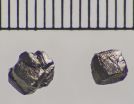(Press-News.org) MINNEAPOLIS, MN - November 24, 2014 - Nearly all individuals in their late 60s and early 70s -- including 100 percent of men -- now qualify for and should consider starting a statin medication to reduce their risk of cardiovascular disease, under the recently released cholesterol guidelines from the American College of Cardiology (ACC) and the American Heart Association (AHA).
That's according to a research letter published today in the 11/20/2014 (JAMA-IM) by Michael D. Miedema, MD, MPH, a research cardiologist at Minneapolis Heart Institute Foundation and cardiologist at Minneapolis Heart Institute® at Abbott Northwestern Hospital.
Released in November 2013, the ACC/AHA guidelines for the treatment of blood cholesterol attempt to target individuals that are most likely to benefit from cholesterol-lowering statin therapy.
"The guidelines are a significant change from prior guidelines that relied heavily on levels of bad cholesterol to determine who to treat," states Dr. Miedema. "Instead, the new guidelines recommend focusing statin therapy on the individuals that are at the highest risk for heart attack and stroke, even if their cholesterol levels are within normal limits."
In addition to recommending statin therapy for individuals with known cardiovascular disease, diabetes, or markedly elevated cholesterol levels, the guidelines also recommend statin therapy for individuals without these conditions, but with an elevated estimated risk of a heart attack or stroke in the next 10 years based on a risk calculator. The calculator factors in an individual's age, gender, race, and risk factors and recommends that patients with an estimated 10-year risk above 7.5% consider statin therapy.
While Dr. Miedema believes the scientific evidence supports this "risk-based" approach, one potential concern is that the risk calculator relies too heavily on age to determine an individual's risk. "Older individuals will likely cross the 7.5% threshold based on age alone, even if they have normal cholesterol levels and no other cardiovascular risk factors, and our study confirms this notion."
Miedema and his colleagues studied 6,088 black and white adults between the ages of 66 and 90 in the Atherosclerosis Risk in Communities (ARIC) Study, a longitudinal study of cardiovascular disease sponsored by the National Heart, Lung, and Blood Institute that has been following participants for about 25 years. The ARIC cohort was reassessed in 2013, and the study analyzed the volume of statin-eligible participants based on the previous Adult Treatment Panel (ATP) III cholesterol guidelines compared to the newer ACC/AHA guidelines.
"Based on the ATP III guidelines, we found that just over 70% of the ARIC participants were eligible for statin therapy," Miedema said. "In contrast, 97 percent were statin eligible by ACC/AHA criteria. For men 66-75 years old, the qualification rate was 100 percent."
While half of the cohort was older than 75, the ACC/AHA guidelines do not provide a recommendation for or against statin therapy for people of that age group. However, researchers noted that more than half of these older individuals in the study were taking a statin.
"We don't have great data on the efficacy of statin medications in the elderly so the guidelines drew a cut-off for the recommendations at age 75," Miedema said. "This is understandable, but it kind of leaves clinicians in the dark as to what to do with healthy elderly patients, who are often at high risk for heart attacks and strokes."
"We clearly need more research looking at the best way to determine who should and should not take a statin, as well as the risks and benefits of statin therapy in elderly patients," Miedema said.
INFORMATION:
About the Minneapolis Heart Institute Foundation
The Minneapolis Heart Institute Foundation is dedicated to creating a world without heart disease through groundbreaking clinical and population health research and community outreach. MHIF's mission is to improve people's lives through the highest quality cardiovascular research and education.
Scientific Innovation and Research - Publishing more than 120 peer-reviewed studies each year, MHIF is a recognized research leader in the broadest range of cardiovascular medicine. Each year, cardiologists and hospitals around the world adopt MHIF protocols to save lives and improve patient care.
Education and Outreach - Research shows that modifying specific health behaviors can significantly reduce the risk of developing cardiovascular disease. As part of its mission, the Minneapolis Heart Institute Foundation has been involved in cutting-edge, transformative population health research to connect, engage, inform and empower individuals and communities to improve their health.
Contact:
Teresa Ambroz
Minneapolis Heart Institute Foundation
612-863-9041
TAmbroz@mhif.org
http://www.mplsheart.org
The immune system is designed to remove things not normally found in the body. Cells undergoing change, e.g. precursors of cancer cells, are therefore normally recognised and removed by the immune system. Unfortunately, the different cancer cells contain mechanisms that block the immune system's ability to recognise them, allowing them to freely continue cancer development.
Certain cancer cells overexpress immunostimulatory molecules in liquid form. Such over-stimulation has a negative impact on the immune system:
"You can say that the stimulating molecules over-activate ...
The degree to which parents sacrifice themselves for their children depends on a variety of factors. On the one hand nest predators pose a threat to the young and the parent birds. But also the time of hatching plays a role. Earlier studies have shown that birds born late in the season are more likely to be protected by their parents, as the adult birds often do not have the chance to produce replacement clutches. Older offspring also tend to be protected more readily than younger ones, as much more parental care and energy have already been invested.
"Studies on the ...
Scientists have argued for half a century about the existence of a form of diamond called lonsdaleite, which is associated with impacts by meteorites and asteroids. A group of scientists based mostly at Arizona State University now show that what has been called lonsdaleite is in fact a structurally disordered form of ordinary diamond.
The scientists' report is published in Nature Communications, Nov. 20, by Péter Németh, a former ASU visiting researcher (now with the Research Centre of Natural Sciences of the Hungarian Academy of Sciences), together with ASU's ...
CORVALLIS, Ore. - If you live in lionfish territory in the Atlantic Ocean, the last thing you want to be is a small fish with a long, skinny body, resting by yourself at night, near the bottom of the seafloor.
If so, your chances of being gobbled up by a lionfish increase by about 200 times.
Findings of a study on lionfish predation behavior, which may also apply to some other fish and animal species, have shed some new light on which types of fish are most likely to face attack by this invasive predator, which has disrupted ecosystems in much of the Caribbean Sea and ...
Philadelphia, PA, November 24, 2014 - Pregnant women with diabetes are at an increased risk for many adverse birth outcomes. Preconception care (PCC) can significantly lower these risks by helping pregnant mothers with diabetes control their glucose levels, resulting in healthier babies and less money spent on complicated deliveries and lifelong medical complications. Effective, universal PCC for diabetic mothers could avert an estimated $5.5 billion in health expenditures and lost employment productivity over affected children's lifetimes, according to a new study published ...
This news release is available in German.
X-ray flashes are a unique scientific tool. They are generated by accelerating electrons to very high energy levels in kilometer-long vacuum tubes, so-called linear accelerators, and then deflecting them with specially arranged magnets. In the process the particles emit X-ray radiation that is amplified until an ultra-short and intensive X-ray flash is released.
Researchers use these X-ray flashes to resolve structures as small as one ten billionth of a meter (0.1 nanometer) in size. That is roughly the diameter of a ...
LA JOLLA, CA--November 24, 2014--A team led by scientists from The Scripps Research Institute (TSRI) has found a simple method to convert human skin cells into the specialized neurons that detect pain, itch, touch and other bodily sensations. These neurons are also affected by spinal cord injury and involved in Friedreich's ataxia, a devastating and currently incurable neurodegenerative disease that largely strikes children.
The discovery allows this broad class of human neurons and their sensory mechanisms to be studied relatively easily in the laboratory. The "induced ...
ANN ARBOR--Our bones are smart. Bones know that by adolescence it's time to stop growing longer and stronger, and from that point on bones keep their shape by healing injuries.
This question of why bones grow longer and stronger in children, but stay static in adults--yet retain the ability to heal themselves, has long perplexed scientists in the bone regeneration field. But researchers from the University of Michigan, Kyoto University and Harvard University believe they may have unearthed a big piece of this puzzle.
The team discovered that a certain subset of cartilage-making ...
VIDEO:
When zebrafish are infected with bright blue Mycobacterium marinum, bright red immune cells quickly surround the bacteria to form tightly organized nuggets called granulomas (vessels green, bacteria blue, immune cells...
Click here for more information.
DURHAM, N.C. -- The body responds to tuberculosis infection by locking the bacterial offenders into tiny clusters of immune cells called granulomas, which are a hallmark of the disease. This containment strategy succeeds ...
The structure of pores found in cell nuclei has been uncovered by a UCL-led team of scientists, revealing how they selectively block certain molecules from entering, protecting genetic material and normal cell functions. The discovery could lead to the development of new drugs against viruses that target the cell nucleus and new ways of delivering gene therapies, say the scientists behind the study.
At the heart of every cell in our body is a cell nucleus, a dense structure that contains our DNA. For a cell to function normally, it needs to surround its nucleus with a ...





